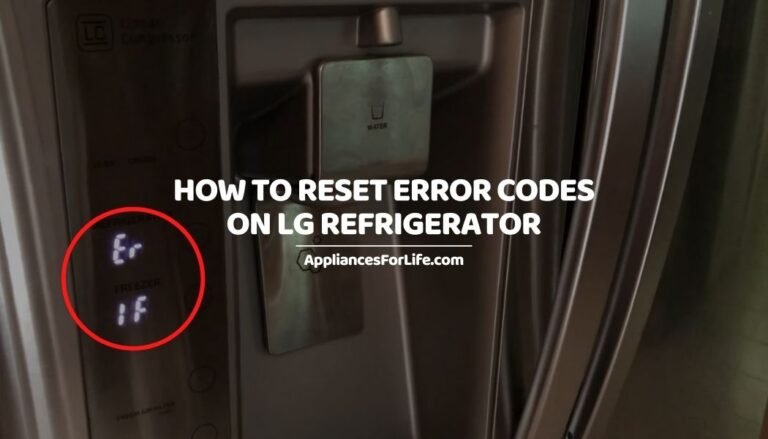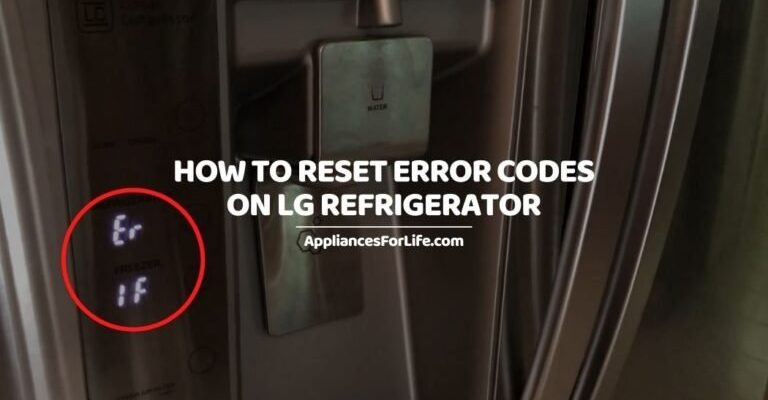
Resetting a device is like giving it a fresh start, like rebooting your computer when it’s acting sluggish. You might be wondering if this trick can work for refrigerators too. In many cases, resetting can be an easy first step to clear minor glitches and get things back on track. Let’s explore whether resetting can fix the E3 error code in your LG refrigerator, and if so, how to go about it.
Understanding the E3 Error Code
Let’s dive a bit deeper into what the E3 error code means. Essentially, this code relates to the refrigerator’s defrosting system, which is crucial for keeping your fridge running smoothly. Think of the defrosting system as your refrigerator’s personal anti-freeze. It prevents ice from building up in areas where it shouldn’t, like the vents and coils, allowing your appliance to keep cool efficiently.
When an E3 code appears, it’s like your fridge is waving a little red flag, saying, “Hey, something might be wrong with my defrosting system!” This could be due to a range of issues, from a faulty defrost sensor to a malfunctioning fan. Imagine trying to run with your shoelaces tied together; that’s how your fridge feels when its defrost system isn’t working properly.
Now, an important thing to remember is that while resetting might clear the error code temporarily, it doesn’t necessarily fix the underlying problem. Much like resetting your phone won’t fix a cracked screen, a reset won’t mend mechanical or electrical faults in the refrigerator. However, it’s often the first step recommended by manufacturers to rule out any minor, temporary glitches.
How to Reset Your LG Refrigerator
Ready to give resetting a try? It’s easier than you might think. Unplug your refrigerator from the power source. Keep it unplugged for about 30 seconds to one minute. This is like giving the appliance a mini vacation; it’s a short break that can sometimes do wonders for its “mood.” Once you plug it back in, wait a few moments for it to reboot and stabilize.
If your model has a reset button, you’re in luck. Simply press the reset button for a few seconds. It’s often located on the inside, near the control panel. This step is like pressing ‘restart’ on your computer—it reboots the system and can clear any error codes that were triggered by temporary anomalies.
After resetting, keep an eye on your refrigerator to see if the E3 code reappears. If it doesn’t, you may have just solved the problem! However, if the code stubbornly pops back up or returns shortly after, it’s a clear sign that there’s an underlying issue that needs attention.
When Resetting Isn’t Enough
Okay, so what if resetting doesn’t cut it? Don’t throw in the towel just yet. When the E3 code comes back, it’s signaling that the issue might be deeper than a simple reset can handle. In this case, it could be time to roll up your sleeves and dive deeper, or better yet, call in a professional.
Common causes of persistent E3 errors include a faulty defrost heater, a malfunctioning thermostat, or a problem with the wiring. Each of these components plays a vital role in the defrosting cycle. Picture them as parts of a band; if one instrument is off-key, the whole performance suffers. Diagnosing which part is causing the “off-key” error can be complex, especially if you’re new to appliance repair.
Here’s the deal: while DIY repairs are attractive for their cost savings, they’re not always the easiest or safest option. If you’re not comfortable tinkering with your refrigerator’s internal workings, it’s wise to contact a qualified technician. They have the know-how and tools to pinpoint the problem accurately and get your appliance back in tune.
Preventing Future Error Codes
Finally, let’s talk about prevention. After all, helping your refrigerator avoid these hiccups in the first place is the best scenario. Regular maintenance is key. Much like cars need oil changes, refrigerators benefit from routine check-ups and cleaning. Make sure to clean the condenser coils every six months to prevent dust buildup, which can impede the cooling system.
Keep an eye on the door seals too. Think of them as your fridge’s winter coat; if they’re not sealing properly, your appliance has to work harder to stay cool, which can lead to issues like the E3 error code. Regularly inspecting and maintaining these components helps ensure your refrigerator’s health and longevity.
Also, try not to overload your refrigerator. Stuffing it full can block air vents, causing the defrost system to struggle. It’s like trying to run a marathon with a backpack full of bricks. By keeping your fridge organized and not overstuffed, you’re giving it the best chance to operate smoothly.
In summary, while resetting can sometimes fix an E3 error code on your LG refrigerator, it’s not a guaranteed solution. Understanding the code and addressing the root cause is crucial for a lasting fix. And remember, regular maintenance and care can prevent these issues from cropping up in the first place.
